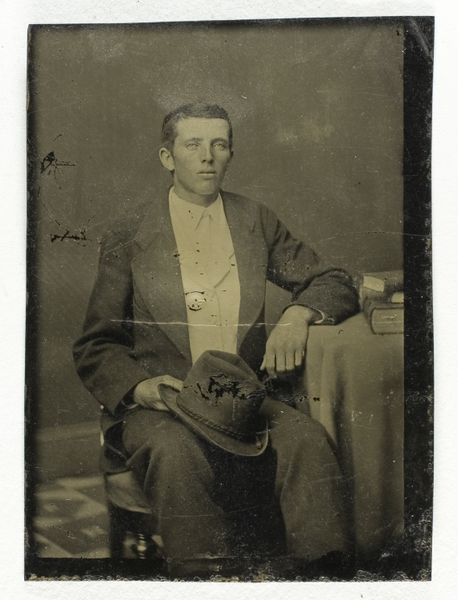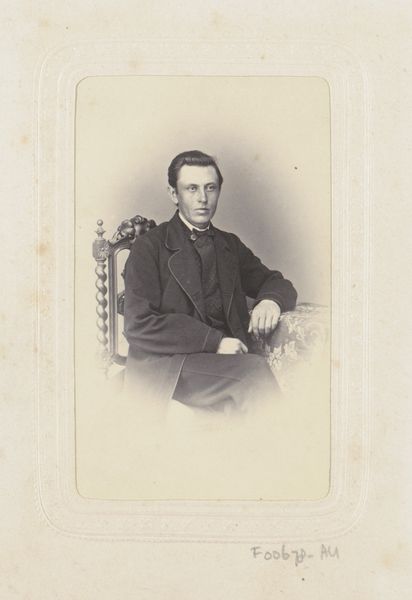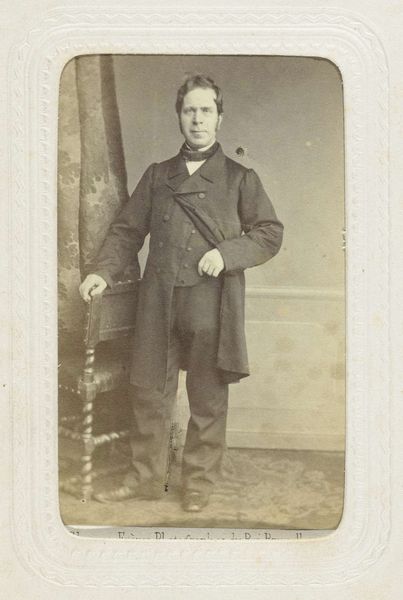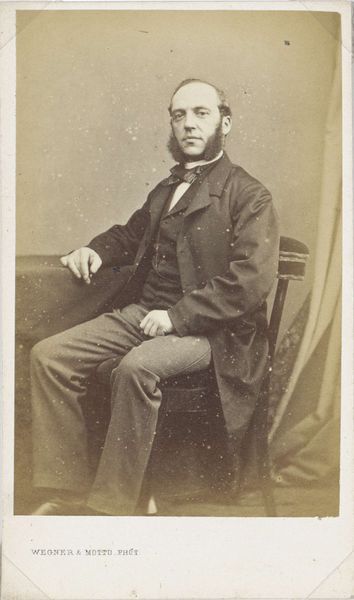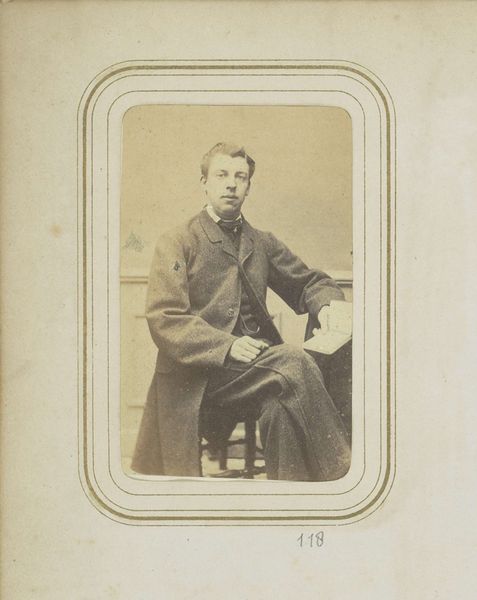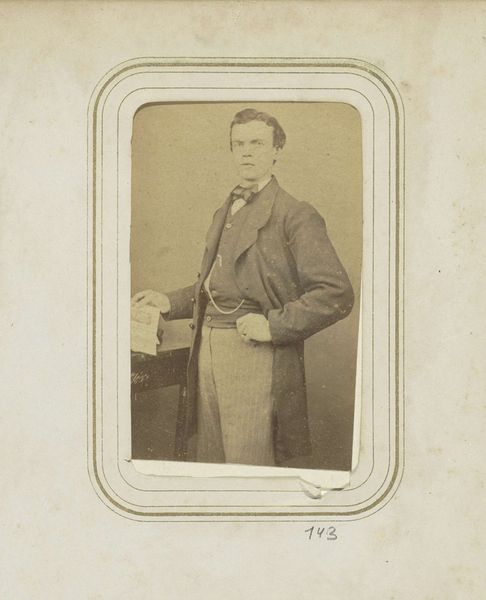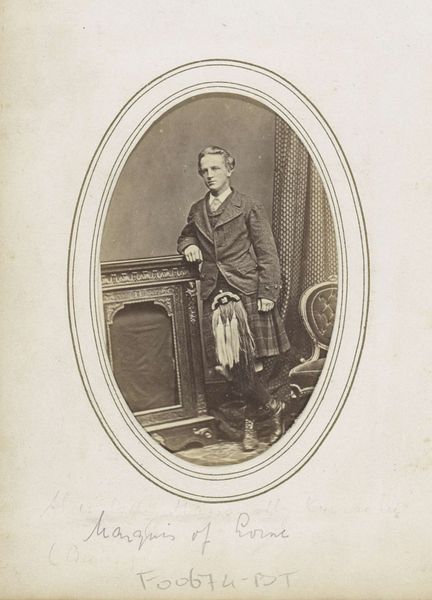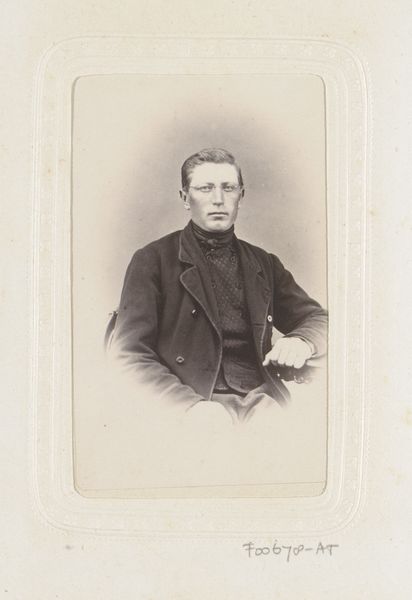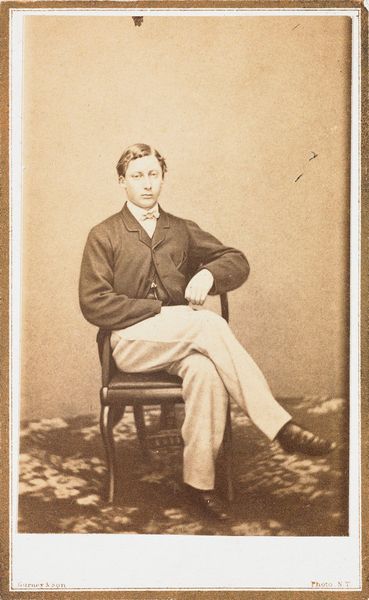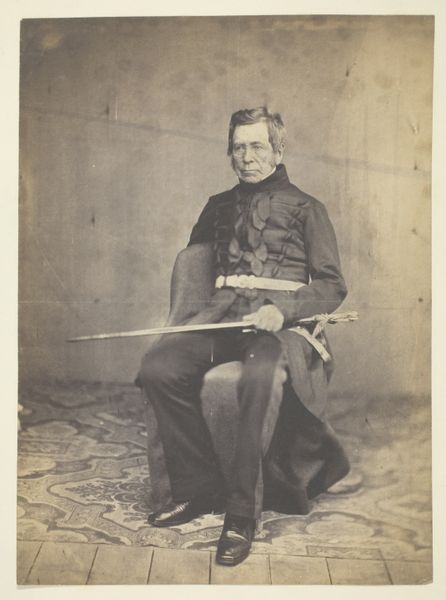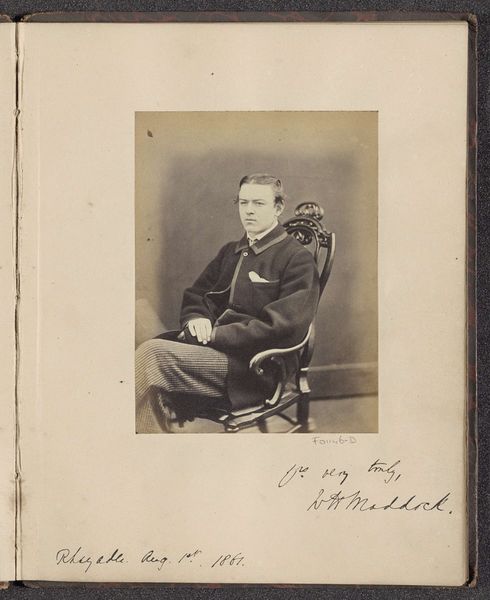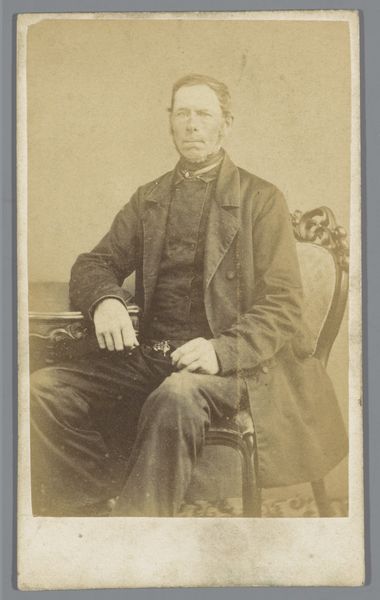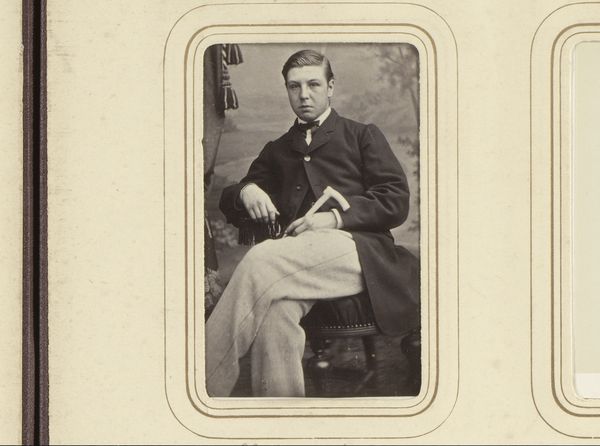
Studioportret van een man bij een tafel met ornamenten c. 1863 - 1866
0:00
0:00
albertgreiner
Rijksmuseum
photography, albumen-print
#
portrait
#
photography
#
academic-art
#
albumen-print
#
realism
Dimensions: height 80 mm, width 54 mm, height 296 mm, width 225 mm
Copyright: Rijks Museum: Open Domain
Editor: Here we have Albert Greiner’s studio portrait of a man, dating from around 1863 to 1866. It’s an albumen print, and he's posed so formally, yet there's a subtle hint of personality peeking through. What can you tell us about what’s going on in this image? Curator: Observe how the subject is positioned next to the table, almost as if drawing power or status from the object itself. This wasn’t just any table, but likely a studio prop loaded with cultural symbolism, even if subtle. Note its ornamentation, hinting at prosperity and refined taste. Editor: So the table is doing more than just providing a surface. Curator: Precisely. These elements spoke to a certain social aspiration and identity that the sitter, and by extension, the photographer, wished to project. How might someone from that era interpret his attire? Editor: The bow tie and dark suit certainly imply respectability and middle-class status. It feels very deliberate, chosen to project an image. Curator: Indeed. And that expression - the gaze, though somewhat reserved, conveys a sense of individual presence beginning to emerge through the constraints of formal portraiture. A statement of self is emerging despite the strict conventions of the time. It subtly challenges notions of portraiture solely as representation, imbuing the image with the sitter’s personal aspirations. Editor: That's fascinating; I hadn't considered how much this one image is trying to communicate about the subject's place in society. Curator: Every element here—the table, his clothes, his expression, contributes to this visual encoding. Reflecting on it all reveals so much more than a simple snapshot of a man; it displays the evolving societal consciousness of the era. Editor: I see so much more here now, looking beyond the surface representation to unpack what it all meant in its own time.
Comments
No comments
Be the first to comment and join the conversation on the ultimate creative platform.

